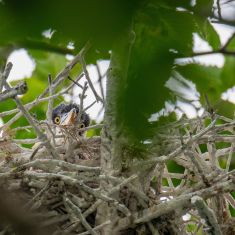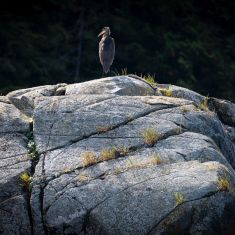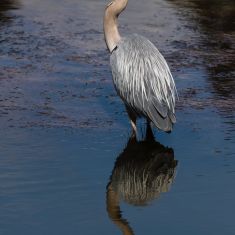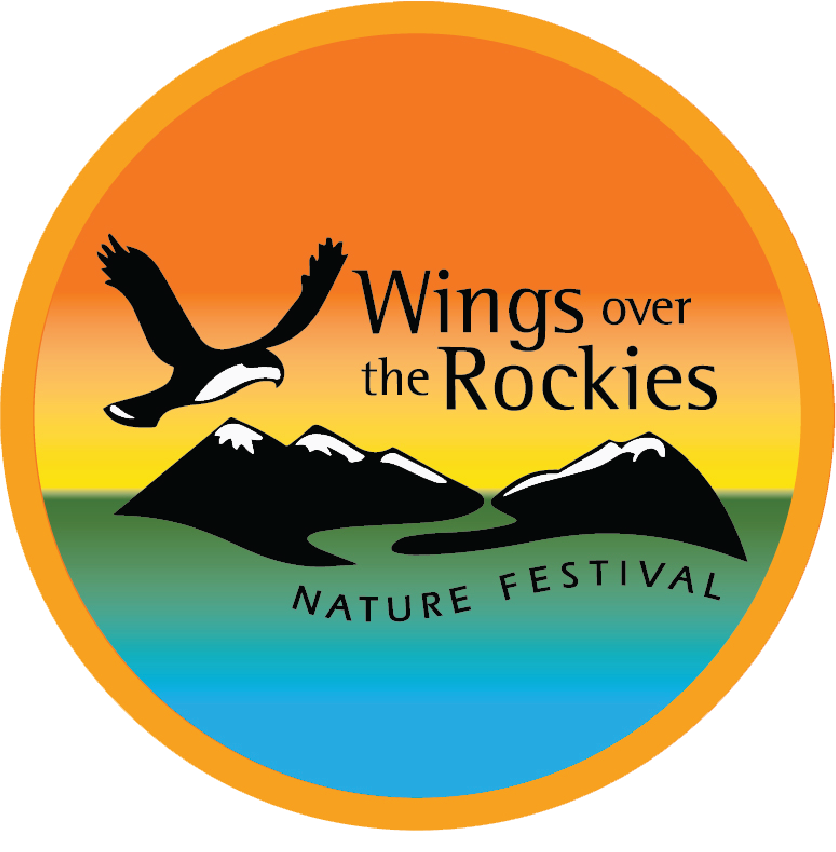


The Great Blue Heron – The Winged Dinosaur
The great blue heron is the largest wading bird in North America, standing over 1 metre in height with a wingspan of up to 2 metres. Scientists believe that birds evolved from dinosaurs – great blue heron gliding in flight, with its loud croaking call, are easily imagined as feathered pterodactyls.
The great blue heron breeds across most of North America south of Alaska, and on to the Galapagos Islands. The heron can adapt to almost any wetland habitat in its range. It may be found in numbers in fresh and saltwater marshes, mangrove swamps, lake edges, or seashores. It is quite adaptable and may be seen in heavily developed areas as long as they hold bodies of fish-bearing water. On the coast of British Columbia and along waterways that don’t freeze, such as the Columbia River, the great blue heron resides year round and is non-migratory.
In springtime, herons gather in colonies where they court, nest, and raise young. Nests are generally in trees and are made using large sticks. In the Columbia Valley heron rookeries are along river banks in isolated cottonwood stands. A rookery may be used for several years before being moved. Typically four eggs are laid but less than two chicks on average reach the fledgling stage and leave the nest to become juveniles. Fewer than 25% of juveniles survive their first winter, after which survival increases to about 75% per year for adults.
Their principal diet is small fish, frogs and even ducklings during the breeding season augmented with small mammals in winter. The most commonly employed hunting technique of the species is wading slowly with its long legs through shallow water and quickly spearing fish or frogs with its long, sharp bill.
Unfortunately heron populations are declining through much of their range due to human caused habitat loss and disturbance. Great blue herons are designated as ‘Blue list’ species by the British Columbia. “Blue listed” species are considered to be vulnerable and “at risk”, but not yet endangered or threatened.
